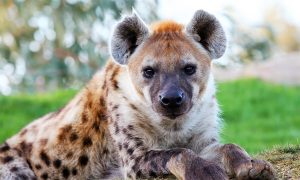
30 interesting facts about kudus
- 👁️ 1563
Kudus are among the most majestic and graceful antelope species native to the African continent. Known for their long, spiraling horns and striking striped patterns, these animals inhabit the woodlands and bushlands of eastern and southern Africa. Kudus are divided into two distinct species: the Greater Kudu, which is larger and found throughout eastern and southern Africa, and the Lesser Kudu, which is smaller and lives in the arid and semi-arid areas of East Africa. Despite their beauty and elegance, kudus face threats from habitat loss and hunting. Here are 30 interesting and informative facts about kudus that showcase their unique characteristics, behaviors, and challenges they face in the wild.
- There are two species of kudus: the Greater Kudu (Tragelaphus strepsiceros) and the Lesser Kudu (Tragelaphus imberbis).
- Greater Kudus are one of the tallest antelopes, with males standing up to 160 cm (63 inches) at the shoulder.
- Lesser Kudus are smaller, with males standing about 100 cm (39 inches) at the shoulder.
- Male kudus have spectacular spiraled horns, which can grow as long as 180 cm (71 inches) in Greater Kudus.
- Females of both species do not have horns.
- The horns of male kudus are used in dominance battles and for defense against predators.
- Kudus are known for their beautiful coat, which features vertical white stripes that help camouflage them in their woodland habitats.
- They are predominantly browsers, feeding on leaves, flowers, and fruits of various plants.
- Kudus are more active during the cooler parts of the day, particularly in the early morning and late afternoon.
- They are excellent jumpers and can clear fences of 2.5 meters (8 feet) with ease.
- Kudus have large ears, which give them an acute sense of hearing to detect predators.
- Lions, leopards, and hunting dogs are among the primary predators of kudus.
- Kudus are social animals, but they form small groups rather than large herds.
- The gestation period for a kudu is approximately 7 to 8 months.
- A single calf is born at a time, and females hide their offspring in vegetation to protect them from predators.
- Calves are weaned at around 6 months of age.
- Kudus can live up to 15 years in the wild and even longer in captivity.
- The spiraled horns of the Greater Kudu make 2.5 full twists and are among the most sought-after trophies by hunters.
- Kudus have a distinct alarm call, which sounds like a loud bark, to warn others of danger.
- They often utilize natural salt licks to supplement their diet with minerals.
- Kudus are mainly found in savanna woodlands and bushlands, avoiding open grasslands due to the lack of cover from predators.
- The term “kudu” is derived from the Khoikhoi language, spoken by indigenous peoples of southwestern Africa.
- Greater Kudus are divided into several subspecies, differentiated by slight variations in their coloration and distribution.
- Kudus are known to be susceptible to diseases like tuberculosis and anthrax, which can affect populations in certain areas.
- They require access to water and will migrate seasonally to find suitable drinking spots.
- During the rutting season, males emit a low, grunting vocalization to attract females and assert dominance.
- Kudus are not typically aggressive towards humans but can become dangerous if cornered or wounded.
- Deforestation and loss of habitat due to agricultural expansion pose significant threats to kudu populations.
- Kudus are featured in various African folktales and are revered for their beauty and grace.
- Conservation efforts for kudus include habitat protection, anti-poaching measures, and regulated hunting to ensure sustainable populations.
Kudus are emblematic of Africa’s rich biodiversity and the delicate balance of its ecosystems. Their remarkable physical features, from their spiraling horns to their striking striped patterns, make them one of the most recognizable and admired antelope species. Despite facing challenges from habitat loss and hunting, kudus continue to thrive in protected areas and reserves, where efforts are made to conserve their populations and habitats. The story of the kudus is a testament to the resilience of wildlife and the importance of conservation efforts to preserve the natural heritage of Africa for future generations.











